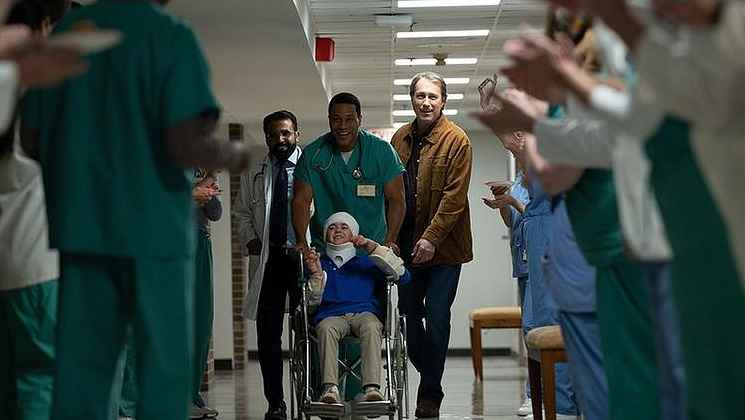





See listing of Recent and Most Popular articles on the Home Page
Finance and Legal
Category: Retirement / Topics: Financial • Future • Government • News • Planning • Retirement • Risk • Social Security
Is Social Security Healthy?
Reported by Stu Johnson
Posted: February 19, 2018
It's stronger than many think, but worthy of caution…
In my local paper yesterday was an article on Social Security in the USA Today Personal Finance section. That article was an excerpt of the original, “How Safe is Social Security?” by Selena Maranjian, which appeared on The Motley Fool website February 13. Following is a brief summary. At the end of this post you will find a link to her full article.
I am aware of the fear among many suggesting that “they” are coming after “our” Social Security. That seems to be most prevalent among those already receiving benefits who are targets for such information. You’ve probably seen pictures of people holding signs demanding “Don’t Touch My Social Security, Medicare, Medicaid.” But there are also fears among those still working that they should not factor Social Security into their retirement planning because it will be insolvent by then. There is a lot of fear mongering. Maranjian opens her article with this statement:
Some common American worries are gaining weight, getting wrinkles, and wondering whether Social Security will go bankrupt. According to a 2017 Nationwide Retirement Institute survey, 78% of pre-retirees report being worried "about the Social Security program running out of funding in my lifetime."
If you're among those wondering how safe Social Security is, you'll be happy to learn that the program is healthier than you might think -- at least for now.
The Social Security trust fund
Perhaps like me, you may have heard stories that the Trust Funds behind Social Security are phantoms, raided by Congress, leaving nothing but IOUs filling government warehouses somewhere in Maryland. As Maranjian explains, that is not true:
Managed by the Department of the Treasury, [the two trust funds] permit the U.S. government to hold assets collected and keep track of inflows and outflows. There's a board of trustees who watch over the trust funds and report to Congress annually on their condition. By law, funds are spent only on benefits and administration, and assets in the funds are invested only in securities guaranteed by the U.S. government. These investments are structured so that they never lose value. They generate interest that can be used to pay benefits and they can be redeemed or sold over time.
Social Security isn’t about to go broke
As Maranjian explains, “since Social Security was created, there have been more Social-Security-tax-paying workers than beneficiaries, and that has kept the system flush with funds.” However, she points out, smaller families and longer life expectancy means the balance of workers to beneficiaries has changed radically: in 1950 there were 16.5 workers per recipient. In 2013 if was down to 2.8 and that is expected to hit 2.1 by 2035.
The trust funds have been running a surplus since 1984, but those surpluses are shrinking and while they may disappear by 2020, interest on incoming funds will help.
Social Security funds are likely to see their reserves run dry between 2033 and 2037 if no changes are made. If that happens, payment checks won't disappear, but they'll likely shrink by about 25%. So the worst that is likely to happen to folks expecting to draw checks from Social Security in the coming decades is that they'll receive smaller checks. That is bad news, but it's not the worst news.
What about the future?
Maranjian discusses several options for the future that have been suggested by various groups:
- One survey found 72% of respondents in favor of increasing future Social Security payments to provide more secure retirements; another found almost 76% in favor of reducing benefits for the top 25% of earners. The latter argument, however, shows a lack of understanding, assuming that top earners get a lot more in Social Security benefits than the low-wage workers. In fact, the maximum benefit in 2017 was $2,687 a month ($32,244 a year), with the average at $1,342 a month ($16,104). This is because of the earnings cap of $127,200 in 2017. (Above that, no tax is collected, but those earners do not cause the benefit to rise). But, isn’t that a lot of people? And, only about 6% of workers earn above that amount in wages in a given year. (based on information from an article in TIME magazine, Feb 6, 2017)
- Increasing the Social Security tax rate paid by employers and employees would increase money going into the trust fund (this was done in 1983 in anticipation of the retirement of Baby Boomers).
- Tax a person’s entire income. Currently there is a cap of $128,400 in 2018, meaning high income individuals may be earning many times that amount without paying Social Security tax on it.
Maranjian then suggests that with the Republican party currently in charge in Washington, D.C., “many GOP leaders are interested in shrinking Social Security instead of strengthening or expanding it.” She then lists four of the ideas being floated and the concerns for each:
- Increase the “full” retirement age from 66 (67 for those born in 1960 and later) to 68, 69, or even 70. While Americans are living longer, “a later retirement age will still mean a shorter retirement for many people -- and fewer benefits paid to them, too.”
- Change the cost-of-living calculation to a more conservative index (“chained CPI”) than the one currently used (CPI-W). In my own analysis of COLA adjustments for a program of housing assistance for needy seniors in my city, it seems that even the current index does not account for the costs that hit these people the hardest—such as healthcare, food, and transportation.
- Cut back benefits for those wealthy enough to not need so much. Maranjian suggests that they “could argue that they paid into the system so should benefit from it,” though there is already a cap on benefits ($2,687 a month or $32,244 annually in 2017).
- Privatize Social Security, partially or fully. Individuals would manage the privatized portion of their own accounts, similar to a 401(k). Maranjian states “Its downsides include the fact that many people are not financially savvy and may not do well managing these vital funds, and that an economic downturn could significantly shrink many people's retirement coffers.”
If the Democrats were in charge in Washington, D.C., would Maranjian see any differences? It would not be surprising to see efforts to expand benefits, but would the underlying system be strengthened at the same time? Otherwise, it's just kicking the can down the road—and a bigger can, at that!
It’s a political tightrope, no matter who is on the high wire. That is why it pays to resist the fear mongers (including the poliiticians themselves, who lob bombs across the aisle, a sad practice that does not solve serious problems that many seniors grapple with every day), get the most accurate and current information available, let your views be known, and not neglect the role you should play in planning for your retirement years.
Read Selena Maranjian’s full article on The Motley Fool website.
Posted: February 19, 2018 Accessed 1,209 times
![]() Go to the list of most recent Finance and Legal Articles
Go to the list of most recent Finance and Legal Articles
![]() Search Finance and Legal (You can expand the search to the entire site)
Search Finance and Legal (You can expand the search to the entire site)
![]() Go to the list of Most Recent and Most Popular Articles across the site (Home Page)
Go to the list of Most Recent and Most Popular Articles across the site (Home Page)
 Loading requested view...
Loading requested view...